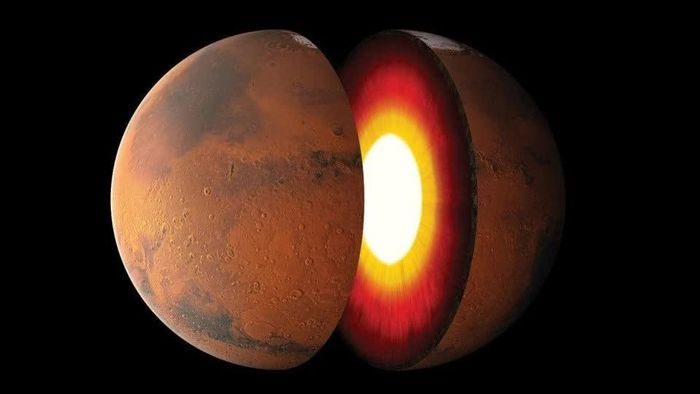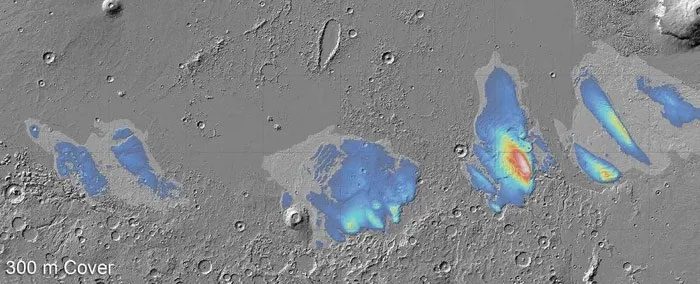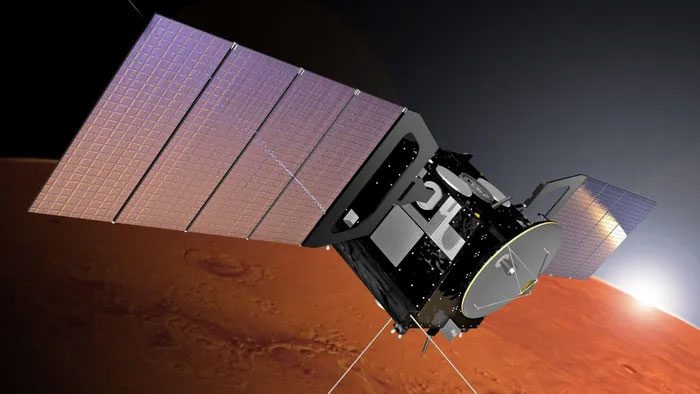Researchers have recently discovered a massive ice deposit buried beneath the sediment layers on Mars. This finding could provide insights into the climatic conditions of Mars in the past.
The surface of Mars appears barren and lifeless, but it seems that this red planet is hiding many secrets that the human eye cannot see.

Mars once had rivers, lakes, and even oceans. (Image: Future).
Fortunately, we have technology. A recent radar survey of the Medusae Fossae geological formation located along Mars’ equator has revealed what appears to be huge ice blocks buried beneath several kilometers of sediment.
Water Buried Under Thick Sediment Layers
This research was published in Geophysical Research Letters. According to scientists, this is the largest amount of water ever found in the equatorial region of Mars. This indicates that the planet is not as dry and lacking in water as we once thought.
Scientists also mentioned that the amount of water buried on Mars is equivalent to the water in the Red Sea on Earth. If this water were brought to the surface and “melted,” it would be enough to create an ocean with a depth of 1.5 to 2.7 meters.

Objects believed to be massive ice blocks buried on Mars. (Image: ESA).
Evidence of these buried ice blocks was first discovered in 2007. That year, scientists found them buried under sediment at a depth of 2.5 kilometers, but they were unsure of their nature.
Thanks to new tools and data, scientists have now realized that what was found in 2007 are actually huge frozen water deposits.
Geologist Thomas Watters from the Smithsonian Institution stated that he and his colleagues explored the Medusae Fossae geological formation using data from the MARSIS radar on the Mars Express spacecraft.
Through this, he recognized sediment layers that are even 3.7 kilometers thick, much more than initially estimated.
The Medusae Fossae formation is a massive sedimentary deposit stretching about 5,000 kilometers along Mars’ equator. This formation is also seen as the boundary between the northern and southern hemispheres of the planet.
So far, scientists have yet to determine what created such thick sediment layers, only knowing that they are very large and up to several kilometers thick.

Scientists discovered ice on Mars using radar from the Mars Express spacecraft. (Image: ESA).
The Discovery of Water on Mars is a Hopeful Signal
In recent decades, Mars exploration has been increasingly advanced, and our understanding has changed significantly.
Outwardly, we observe that Mars was once a planet with water. Water flowed in rivers, pooled in lakes, or formed oceans. However, today, the planet is just a barren, dry mass on the surface.
Previously, scientists were always puzzled about how the water on Mars disappeared—whether it evaporated completely or was buried underground. This recent discovery has helped researchers find an answer: Water on Mars has been “trapped” in places we cannot see.
Scientists are also interested in the water on the planet for very practical reasons. When humans travel to Mars, they will need water to survive. If Mars indeed has a local water source, people could reduce the amount of water they need to bring along.
Unfortunately, the water in the Medusae Fossae formation is currently beyond human reach. Being buried under kilometers of rock and soil, we cannot access this water source yet.
Nevertheless, this new discovery still gives scientists hope that water may be “hiding” in other locations on Mars. The research also provides additional information to understand the planet’s transformations in the past.
“When did these ‘ice mines’ form, and what did Mars look like at that time? If what we discovered is indeed ice, these massive ice deposits would change much of our understanding of Mars’ climatic history,” Thomas Watters told ScienceAlert.


















































